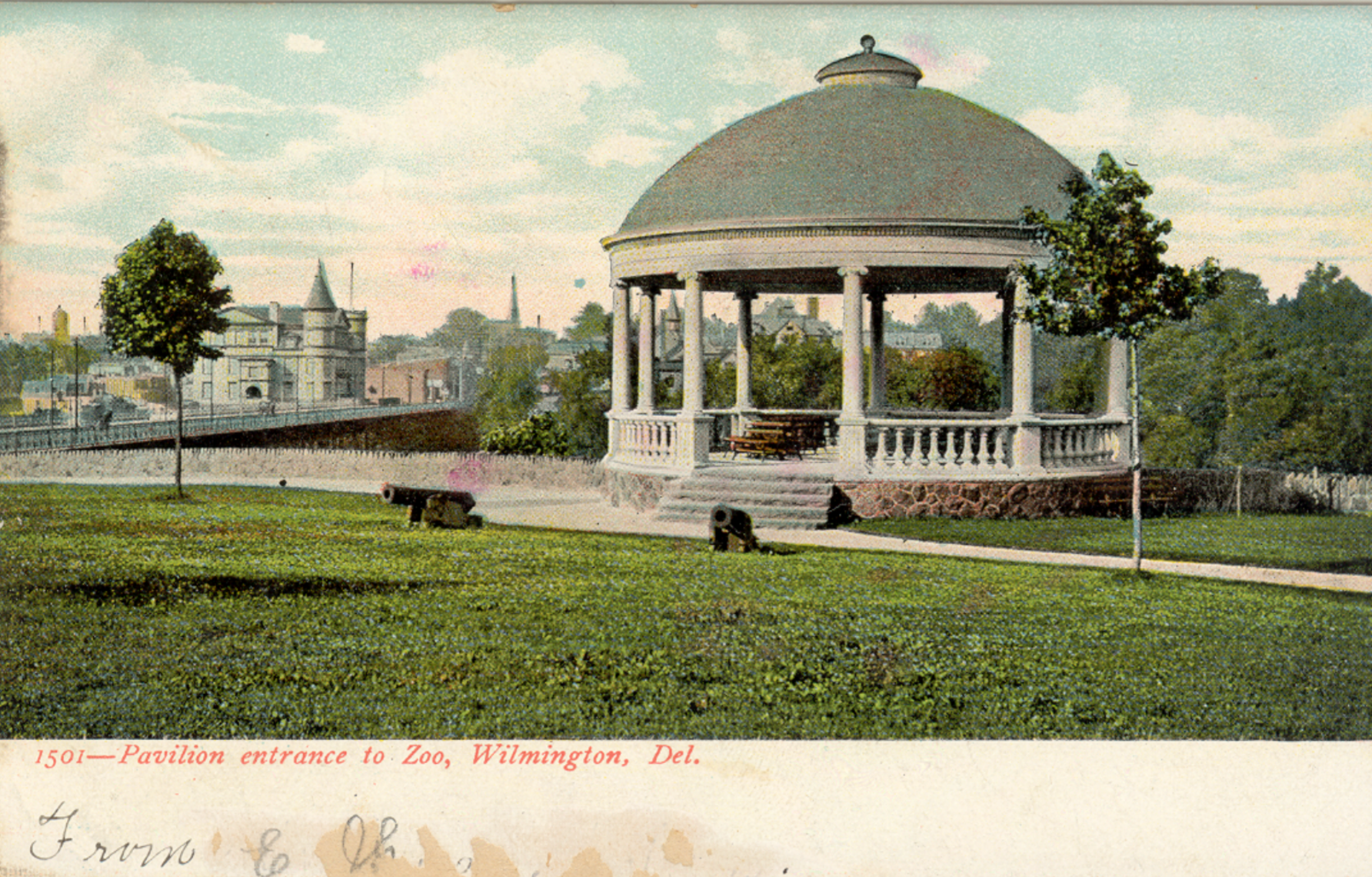By Liz Androskaut, Interpretive Programs Manager at Wilmington State Parks
Nestled on the rocky cliffs overlooking the Brandywine River, the Sugar Bowl is located in Brandywine Park, which is part of Wilmington State Parks. The city of Wilmington created Brandywine Park in 1883 to give residents relief from city living and harsh factory work. To enhance this urban retreat, the park board installed amenities such as pavilions and gazeboes.

Construction of the Sugar Bowl
Construction on the Sugar Bowl, a gazebo, began in 1901 with the building of a battlement parapet and granite base. The pavilion’s cast-iron support structure was produced at the American Bridge Company’s Edgemoor Branch. The structure derives its name, the Sugar Bowl, from its domed roof which was said to resemble the lid of a sugar bowl. To further enhance the area, the Delaware Chapter of the National Sons of the American Revolution donated two cannons in August 1903. This donation is significant because the Sugar Bowl sits on the area that General Washington’s army occupied prior to the Battle of the Brandywine.

Architectural plan for the Sugar Bowl.
How the Sugar Bowl was Utilized
The gazebo served many uses: it was a site for meetings, concerts, church services, community events, and patriotic programs. It also marked the original entrance of the Brandywine Zoo. Theodore A. Lesisen, the Wilmington Park Commission’s Engineer and Superintendent, recommended the Wilmington Park’s Commission host open-air concerts because it would attract orderly crowds and the “moral effect would be beneficial”.

Disrepair
Unfortunately, the Sugar Bowl fell into such disrepair that it was slowly dismantled beginning in 1949 starting with the removal of the roof. In 1945, Hurricane Hazel hastened its demise and in the end, all that remained was a concrete base.

Sugar Bowl during the restoration
Restoration of the Sugar Bowl
In 2006, the Friends of Wilmington Parks took on the task of restoring the Sugar Bowl to its former glory. The restoration was completed with the installation of the fiberglass roof in June of 2016. Now, park visitors can again enjoy beautiful views and experience nature in the heart of the city.

Present-day Sugar Bowl
